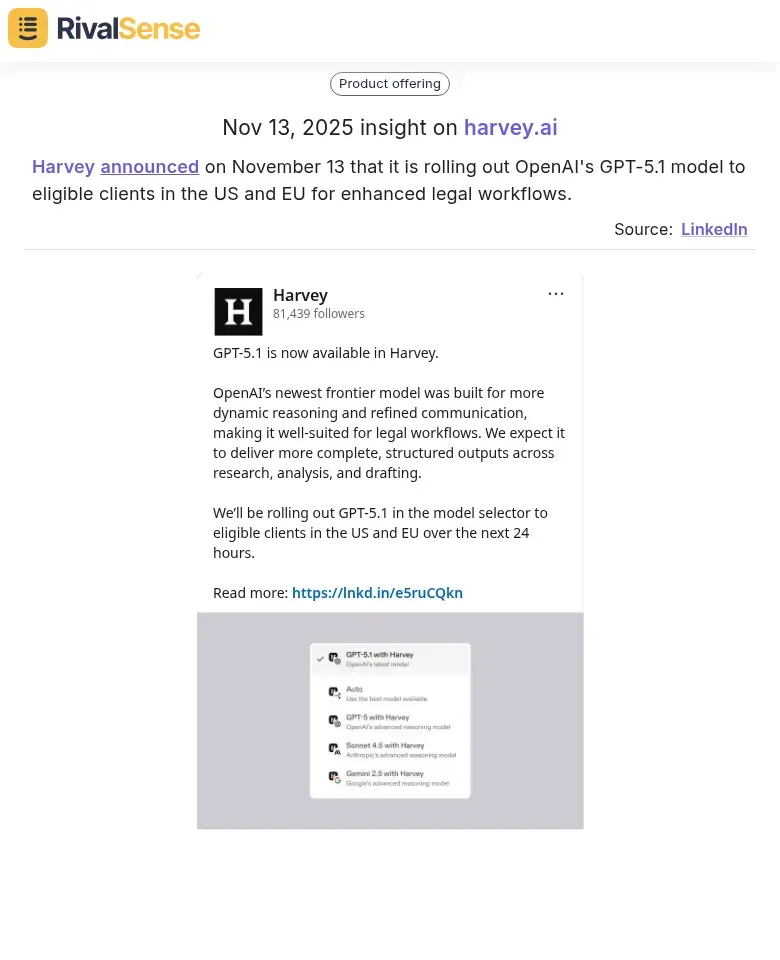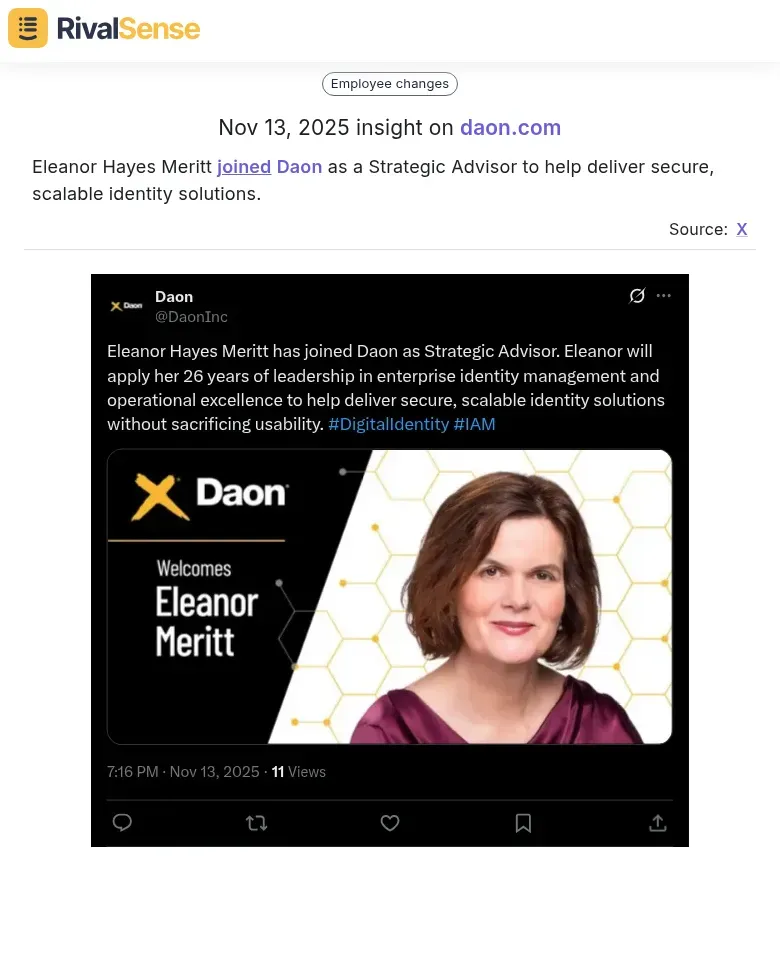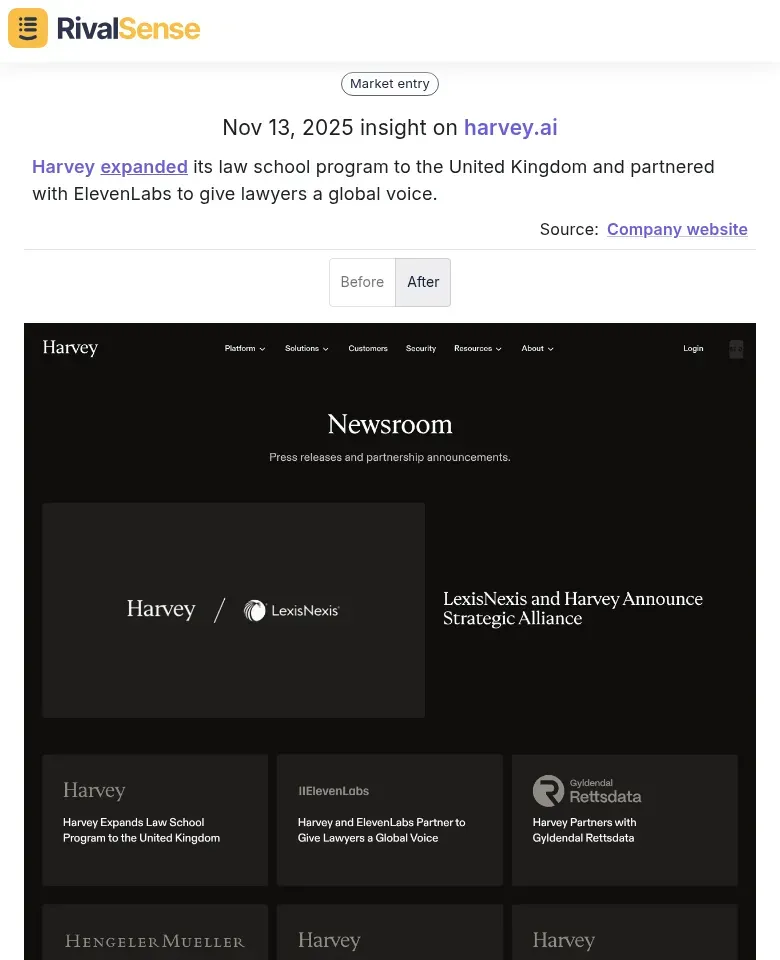The Ultimate Guide to Setting Up Key Account Tracking: A Practical Playbook for B2B Leaders
In today's fast-paced B2B landscape, timing is everything. A new executive hire could signal shifting budget priorities, while a product launch might open doors to strategic partnerships. These moments create windows of opportunity—but only if you spot them before your competitors do.
The Problem with Manual Key Account Monitoring
Manual account tracking is a common challenge for many organizations, primarily because it lacks scalability and efficiency. Sales and marketing teams often miss critical signals because they don't have the bandwidth to monitor each account's digital footprint continuously. This leads to outdated information, generic messaging, and slower response times when key accounts make strategic moves.
The Modern Solution: Automated Key Account Tracking
Forward-thinking companies are shifting from manual methods to automated systems that provide real-time intelligence. These tools monitor a wide range of sources, from social media to regulatory filings, ensuring you never miss a pivotal development. At RivalSense, we've built a platform that tracks competitor product launches, pricing updates, event participations, partnerships, regulatory changes, management shifts, and media mentions across 80+ verified sources, delivering curated insights in weekly email reports.
Step-by-Step Key Account Tracking Setup
Step 1: Define Your Monitoring Priorities
Identifying what to monitor is the foundation of an effective tracking system. Start by aligning your priorities with business objectives to ensure relevance and impact. For sales teams, focus on executive changes and funding rounds; for marketing, track product launches and partnerships; and for leadership, monitor regulatory shifts and competitive moves.
Pro tip: Create separate tracking lists for different account tiers—your top strategic accounts deserve more intensive monitoring than broader targets. For example, tracking product launches can reveal new market opportunities. RivalSense recently identified that Harvey is rolling out OpenAI's GPT-5.1 model to eligible clients in the US and EU for enhanced legal workflows.  This type of insight is valuable because it helps you anticipate competitor innovations and adjust your product or sales strategies proactively.
This type of insight is valuable because it helps you anticipate competitor innovations and adjust your product or sales strategies proactively.
Step 2: Choose Your Tracking Sources
Comprehensive coverage is essential for accurate key account intelligence. Relying on a single source can lead to gaps, so diversify across websites, social media, news platforms, and registries. Effective monitoring includes company blogs, LinkedIn, press releases, industry reports, and event schedules to capture a holistic view.
RivalSense advantage: Our platform automates monitoring across 80+ sources, saving time and reducing errors. For instance, tracking management changes can inform outreach timing. When Eleanor Hayes Meritt joined Daon as a Strategic Advisor, it highlighted a focus on secure identity solutions.  Insights like this are valuable for sales teams to engage new decision-makers early, leveraging leadership shifts to build relationships.
Insights like this are valuable for sales teams to engage new decision-makers early, leveraging leadership shifts to build relationships.
Step 3: Set Up Alert Triggers
Define specific signals that trigger alerts to avoid information overload. Customize triggers based on your priorities, such as notifications for C-level hires, product launches, or partnership news. Starting with 3-5 key triggers allows for focused monitoring that can be refined over time.
Best practice: Use natural language to set triggers for ease of use. Partnership announcements, for example, can reveal collaboration opportunities. RivalSense captured Harvey's expansion of its law school program to the UK and its partnership with ElevenLabs.  This insight is valuable for identifying potential allies or competitive threats, enabling strategic pivots in your business development efforts.
This insight is valuable for identifying potential allies or competitive threats, enabling strategic pivots in your business development efforts.
Step 4: Configure Delivery Cadence
Match alert frequency to your team's workflow to ensure timely action without overwhelming inboxes. Daily alerts suit sales teams needing immediate responses, weekly digests work for marketing planning, and monthly summaries help executives track trends. Tailoring cadence improves usability and effectiveness.
Step 5: Establish Action Protocols
Create clear processes for acting on intelligence to maximize its value. Define response timelines, such as sales outreach within 48 hours of executive changes, and standardize how teams use alerts for campaigns or strategy reviews. This turns insights into actionable outcomes.
Practical Checklist for Key Account Tracking Success ✅
- ✅ Define clear objectives - What business outcomes will tracking drive?
- ✅ Prioritize accounts - Focus on high-value targets first
- ✅ Set specific triggers - Avoid generic "all news" monitoring
- ✅ Assign responsibility - Who receives and acts on alerts?
- ✅ Create response playbooks - Standardize how teams use intelligence
- ✅ Measure impact - Track how tracking influences deal velocity and win rates
- ✅ Review and refine - Adjust triggers based on what delivers value
Advanced Tips for Maximum Impact
Layer Your Monitoring
Diversify tracking streams to cover various use cases for comprehensive coverage. Set up separate monitors for competitive intelligence, market expansion, partnership opportunities, and risk management. This layered approach ensures you capture nuances in account behavior and industry trends.
Coordinate Across Teams
Share intelligence between departments to foster aligned actions. Use shared dashboards or forwarded alerts to keep sales, marketing, and leadership informed. Coordination enhances responsiveness and ensures that insights drive collective business goals.
Act Quickly on Fresh Intelligence
Timely action is critical, as signals lose value over time. Aim to respond within days—not weeks—to capitalize on first-mover advantages in B2B relationships. Speed can differentiate your offers and strengthen account engagement.
What to Expect from Automated Key Account Tracking
When implemented effectively, automated tracking delivers tangible benefits across teams. It transforms raw data into strategic advantages, improving responsiveness and decision-making.
| Team | Key Benefits |
|---|---|
| Sales Teams | 40-60% faster response to buying signals, higher quality conversations, improved deal velocity |
| Marketing Teams | More relevant campaign messaging, faster adaptation to market changes, better alignment with sales priorities |
| Leadership | Early warning of competitive threats, better strategic decision-making, improved market positioning |
Getting Started with RivalSense
Setting up key account tracking is straightforward with the right tools. RivalSense simplifies the process by handling source monitoring and report generation, so your team can focus on strategic actions. Upload your account lists, define priorities, and receive weekly insights that drive results.
Ready to Transform Your Account Intelligence?
Manual monitoring is no longer sufficient in today's dynamic B2B environment. Automated tracking provides the visibility needed to spot opportunities faster and build stronger account relationships. The setup is quick, but the competitive edge lasts for years.
Try out RivalSense for free at https://rivalsense.co/ to tackle the challenges outlined in this guide and get your first competitor report today!
📚 Read more
👉 Engineering Consulting Competitor Webinar Analysis Guide
👉 How Glean's Snowflake Partnership Drove Competitive Intelligence Wins
👉 Unlock Key Account Growth with Competitor Website Monitoring
👉 Boost Productivity with Competitive Car Rental Positioning Strategies
👉 Market Entry Trends: Competitor Regulatory Filing Insights 2025
